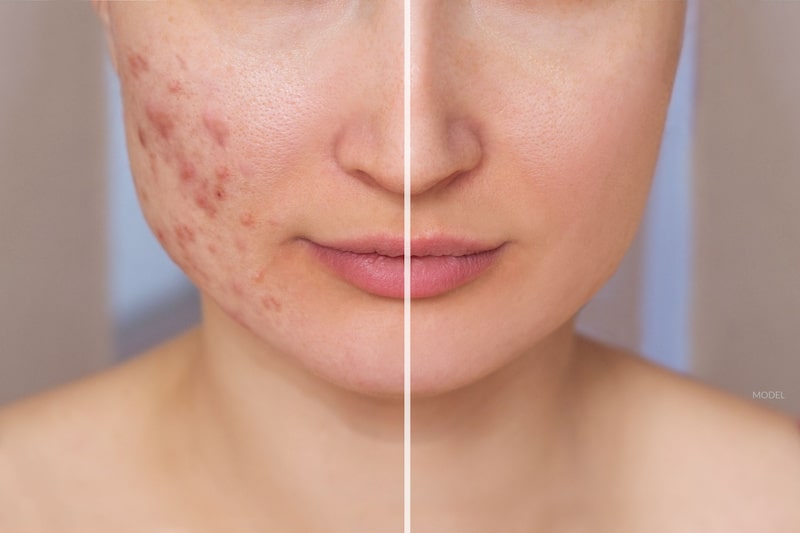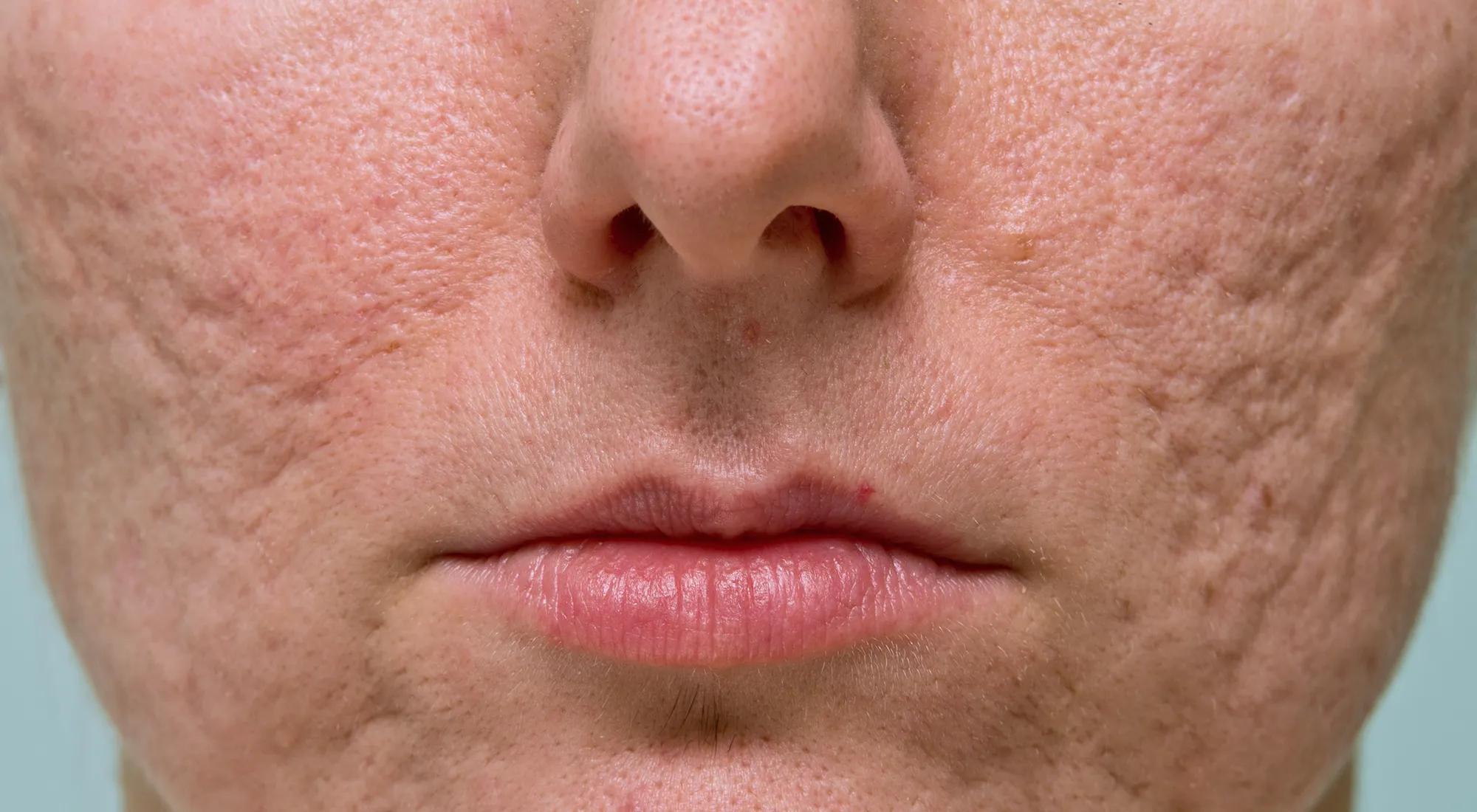Leading Acne Treatment for Sensitive Skin: Mild Solutions for Clear Skin
Leading Acne Treatment for Sensitive Skin: Mild Solutions for Clear Skin
Blog Article
Understanding the Numerous Skin Conditions and Reliable Treatment Alternatives for Acne Scars
Acne scars represent an intricate interplay of skin conditions that significantly influence individuals' self-esteem and overall skin health. As we explore the landscape of acne scar management, it becomes evident that the journey toward more clear skin might entail even more than simply topical options.
Sorts Of Acne Scars

On the other hand, hypertrophic scars result from an overflow of collagen during the healing procedure, leading to increased locations on the skin. These scars are usually solid and can differ in shade, sometimes appearing red or darker than the bordering skin.
Comprehending these sorts of acne scars is vital for developing a reliable therapy strategy - skin rejuvenation treatments. Options may include chemical peels, laser therapy, microneedling, or facial fillers, tailored to the certain scar kind. An extensive appointment with a dermatologist can assist determine the most proper treatment, thinking about the individual's skin type, scar seriousness, and general skin health
Sources Of Acne Scarring
Scarring occurs as an outcome of the body's natural healing response to swelling and injury brought on by acne lesions. When acne types, it sets off an inflammatory action, causing the launch of various cytokines and development factors that advertise recovery. This procedure can occasionally lead to too much cells development or insufficient repair work, resulting in scars.
The primary sources of acne scarring include the extent of the acne itself, period of the sores, and specific skin kinds. Extreme inflammatory acne, such as cysts and blemishes, is a lot more likely to result in scarring as a result of much deeper tissue damage. Additionally, inappropriate handling of acne sores, such as pressing or choosing, can worsen tissue injury and inflammation, increasing the likelihood of scarring.
Genetic proneness also plays a considerable function; people with a household background of scarring go to a higher danger. Moreover, skin kind and shade can influence mark formation, as darker skin tones may experience post-inflammatory hyperpigmentation, while lighter skin may create atrophic marks.
Eventually, comprehending these reasons is essential in managing acne and mitigating the potential for scarring.

Therapy Choices for Scarring
Efficient treatment options for acne scarring differ relying on the kind and severity of the scars. Typically categorized into atrophic, hypertrophic, and keloid scars, these problems call for customized strategies for optimum outcomes.
For atrophic marks, which are defined by a loss of tissue, treatments such as chemical peels, microdermabrasion, and laser treatment are commonly employed. These methods promote skin revival and boost collagen manufacturing, therefore boosting skin structure. Subcision, a minimally intrusive treatment, can additionally work by damaging up fibrous bands under the skin.
Keloid and hypertrophic marks can be much more testing to treat. Alternatives include corticosteroid shots to decrease swelling and squash the marks. In many cases, cryotherapy or laser treatment might be advised to lessen their appearance.
Surgical choices are available for serious scarring, where excision or skin grafting may be needed. It's necessary for individuals to talk to a skin specialist to assess their certain scar kind and discuss one of the most suitable treatment plan. Combining numerous therapies frequently produces the best outcomes, ensuring that each person's one-of-a-kind skin problem is resolved properly.
Natural Remedy and Natural Solutions
All-natural options and natural home remedy can supply an available technique for people looking for to improve the appearance of acne scars (acne scars). Numerous components found in the home kitchen area have actually shown prospective benefits in boosting skin appearance and promoting recovery

Another reliable choice is lemon juice, which acts as an all-natural exfoliant and can lighten hyperpigmentation. It ought to be used carefully, as it may create photosensitivity. Oatmeal masks are also valuable; their gentle peeling can assist remove dead skin cells while calming irritation.
Important oils, such as tea tree oil and lavender oil, can further sustain scar recovery because of their antimicrobial homes. view website It is important to carry out a spot examination prior to applying any kind of solution to make certain there are no adverse reactions. These natural services can be a complementary method in the journey to lessen acne marks.
Stopping Future Scarring
Adopting a proactive approach to skin care can considerably reduce the danger of developing future acne scars. One of the essential strategies is to manage acne successfully as it arises. This involves making use of non-comedogenic skin care items and drugs recommended by dermatologists that target acne without aggravating the skin. Routine cleaning, exfoliation, and hydration can assist keep skin health and wellness and prevent stopped up pores.
In addition, staying clear of the temptation to press or select acne lesions is crucial, as this can lead to inflammation and subsequent scarring. Rather, people should concentrate on using topical therapies that advertise recovery and lower swelling. Components such as salicylic acid, benzoyl peroxide, and retinoids are recognized for their efficiency in managing acne and lessening marks.
Sun security is an additional vital part; direct exposure to UV rays can hinder and darken scars recovery. Consequently, making use of a broad-spectrum sun block daily can minimize these effects - acne scars treatment.
Lastly, keeping a healthy and balanced diet abundant in anti-oxidants and remaining moisturized supports skin regeneration. By executing these safety nets, individuals can dramatically lower their risk of future scarring and advertise overall skin health and wellness.
Conclusion
In Recommended Reading conclusion, a detailed understanding of acne scars, incorporating both atrophic and hypertrophic types, is necessary for reliable therapy strategies. Examination with a skin doctor continues to be vital to design tailored approaches that consider individual skin types and mark seriousness, eventually improving the effectiveness of scar administration methods.
Acne marks stand for a complicated interplay of skin problems that dramatically influence people' self-worth and general skin health and wellness. The 2 main classifications of acne scars are atrophic and hypertrophic scars. These marks are more identified right into 3 subtypes: ice see post pick scars, which are deep and narrow; boxcar marks, which are bigger and have distinct sides; and rolling marks, which develop a wave-like look due to unequal skin structure.
A thorough consultation with a dermatologist can help identify the most suitable intervention, taking into account the person's skin type, scar extent, and overall skin health.
Consultation with a skin specialist continues to be critical to devise customized techniques that take into consideration specific skin kinds and mark severity, ultimately improving the efficacy of scar management methods.
Report this page